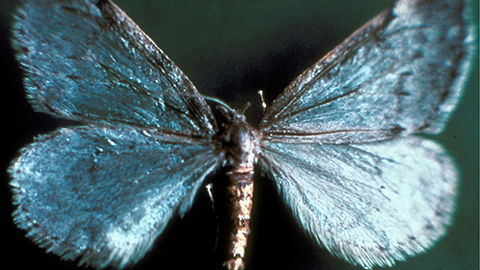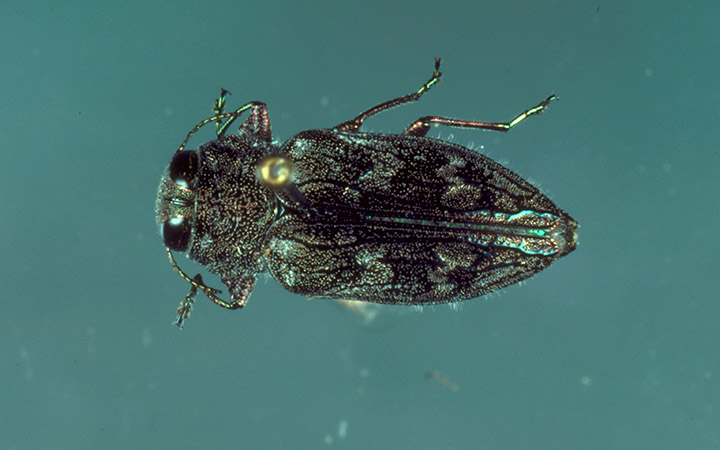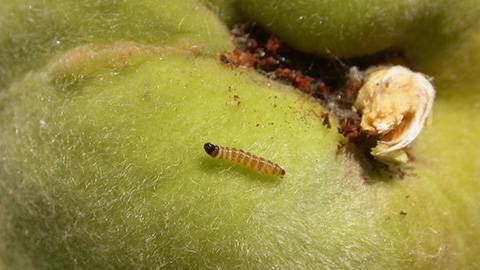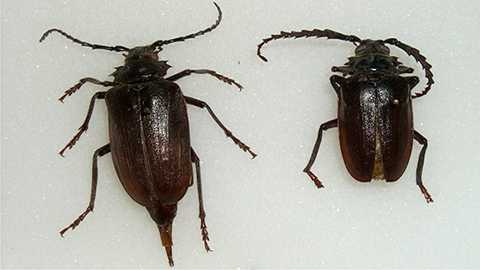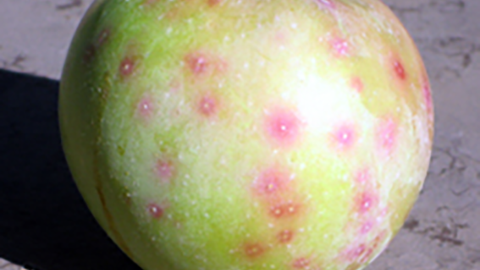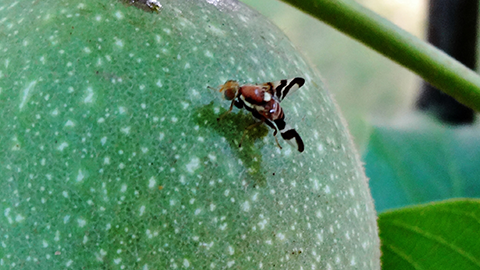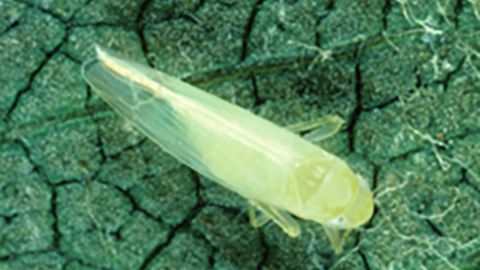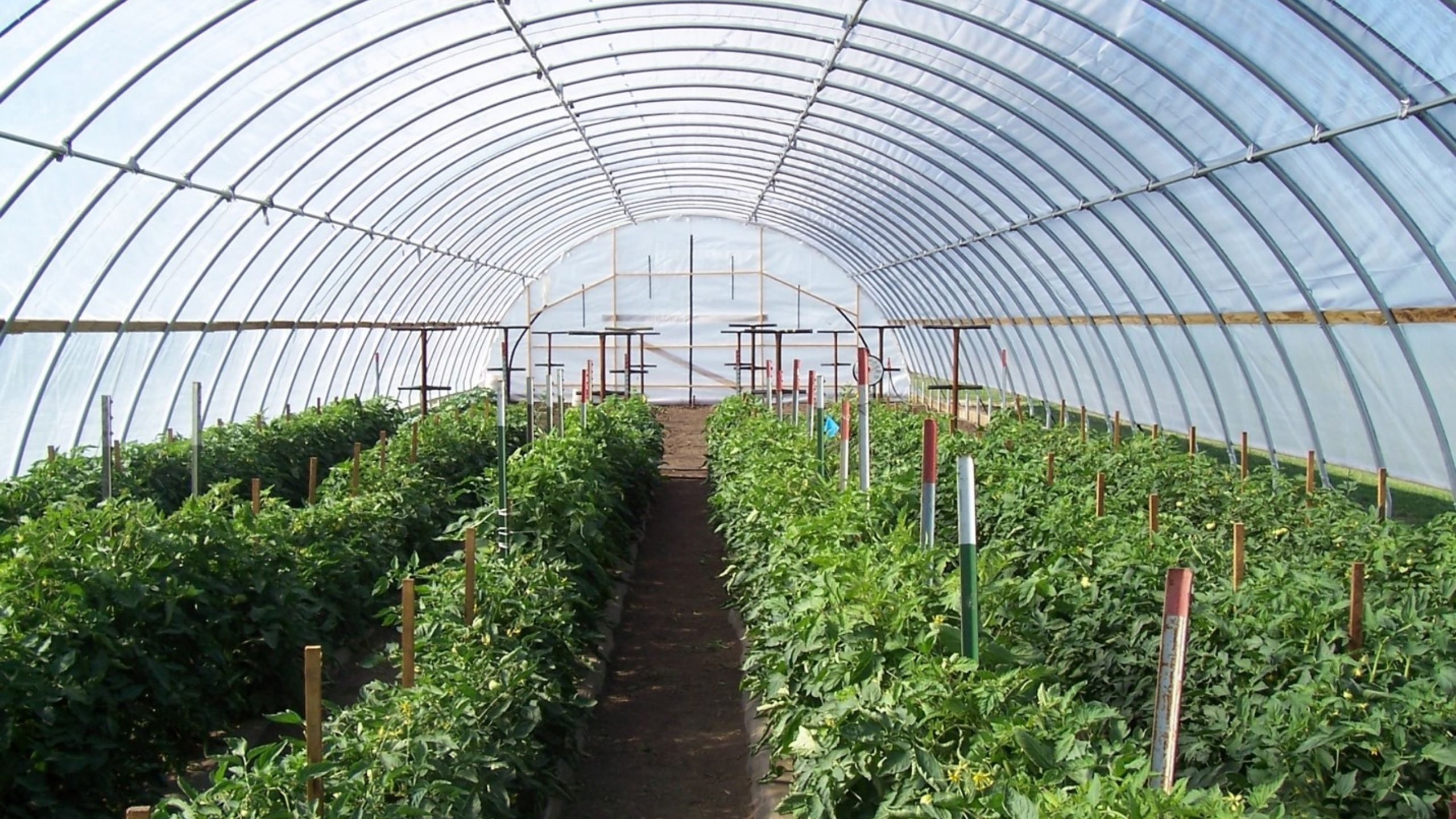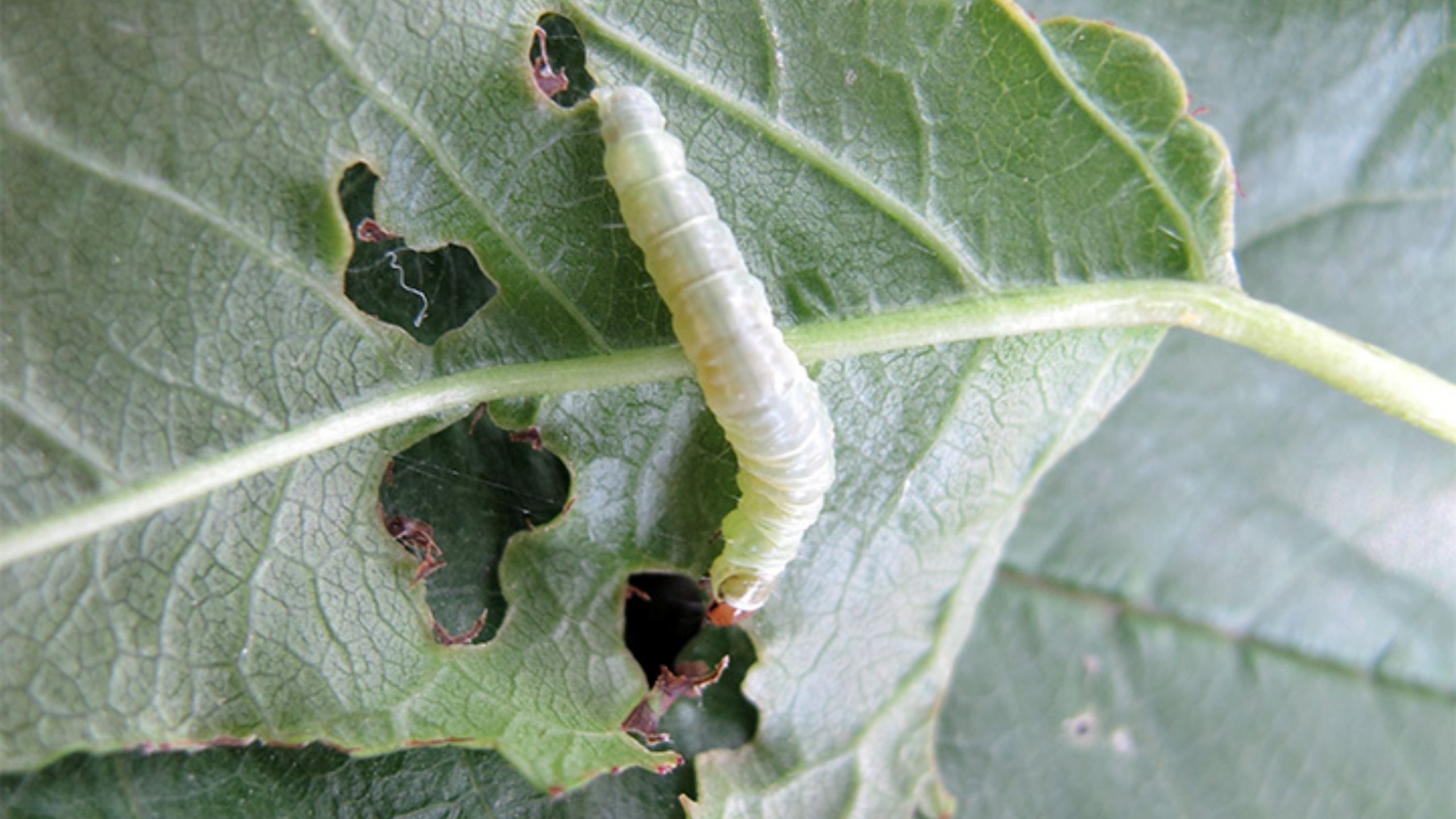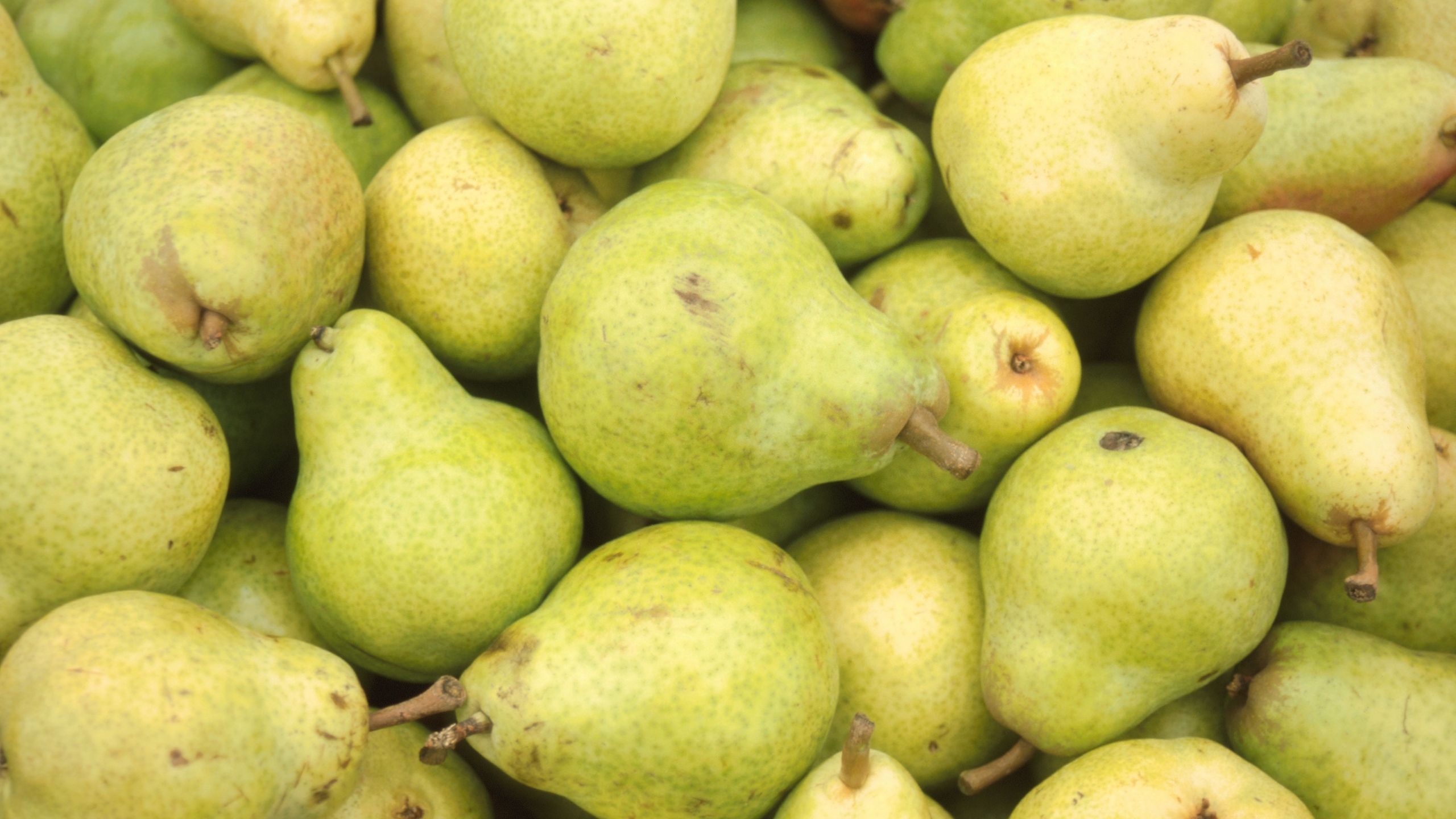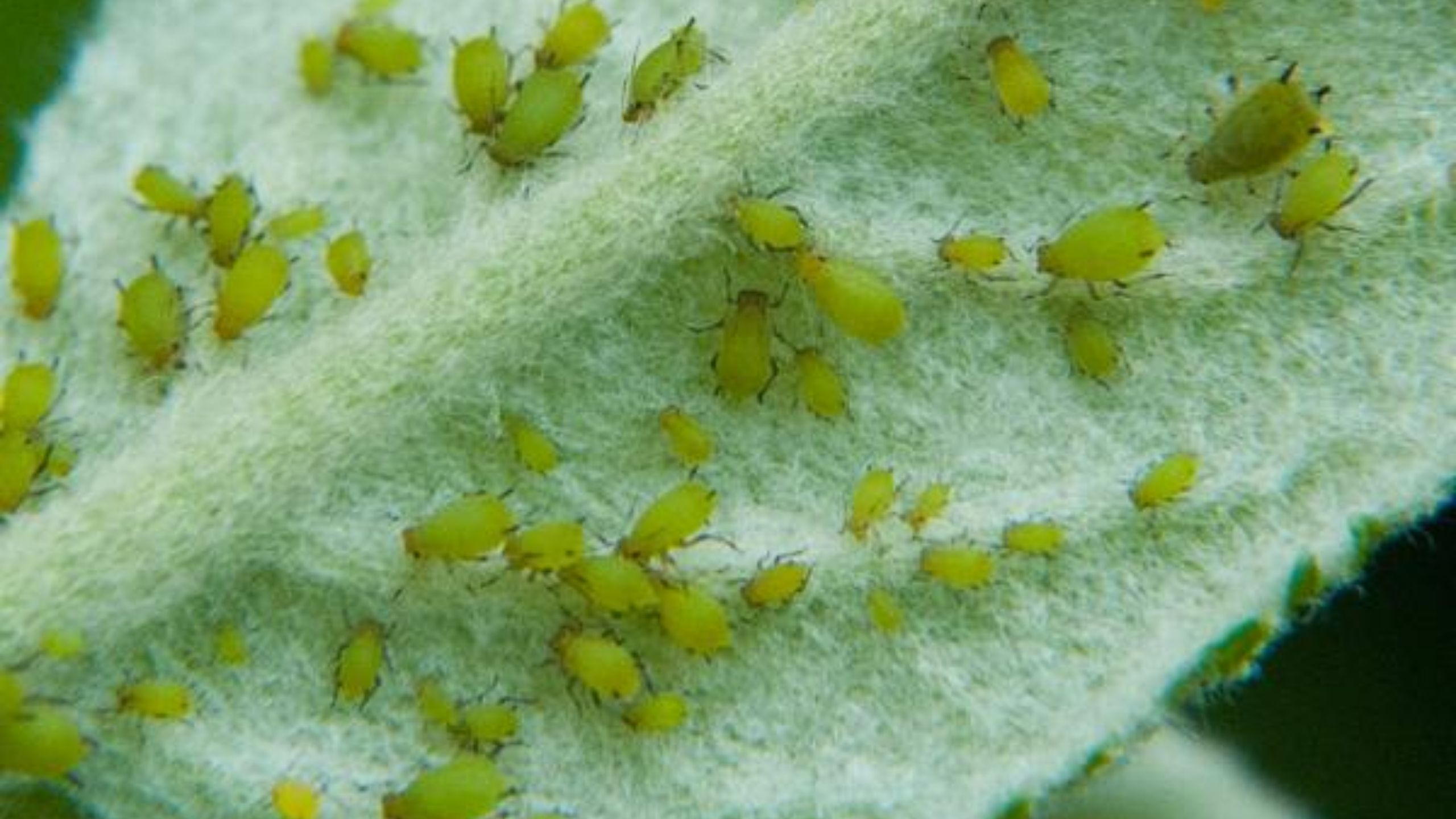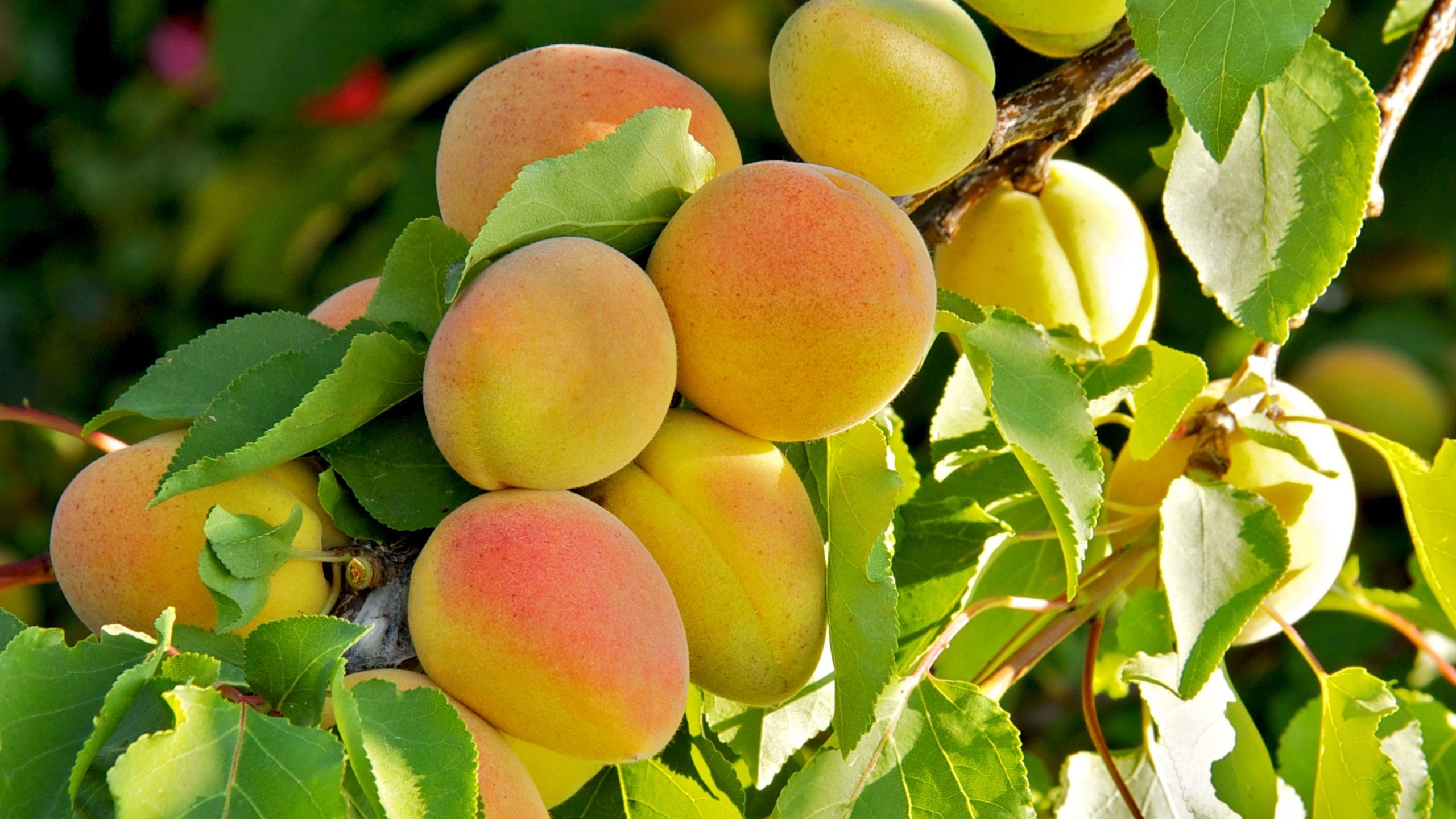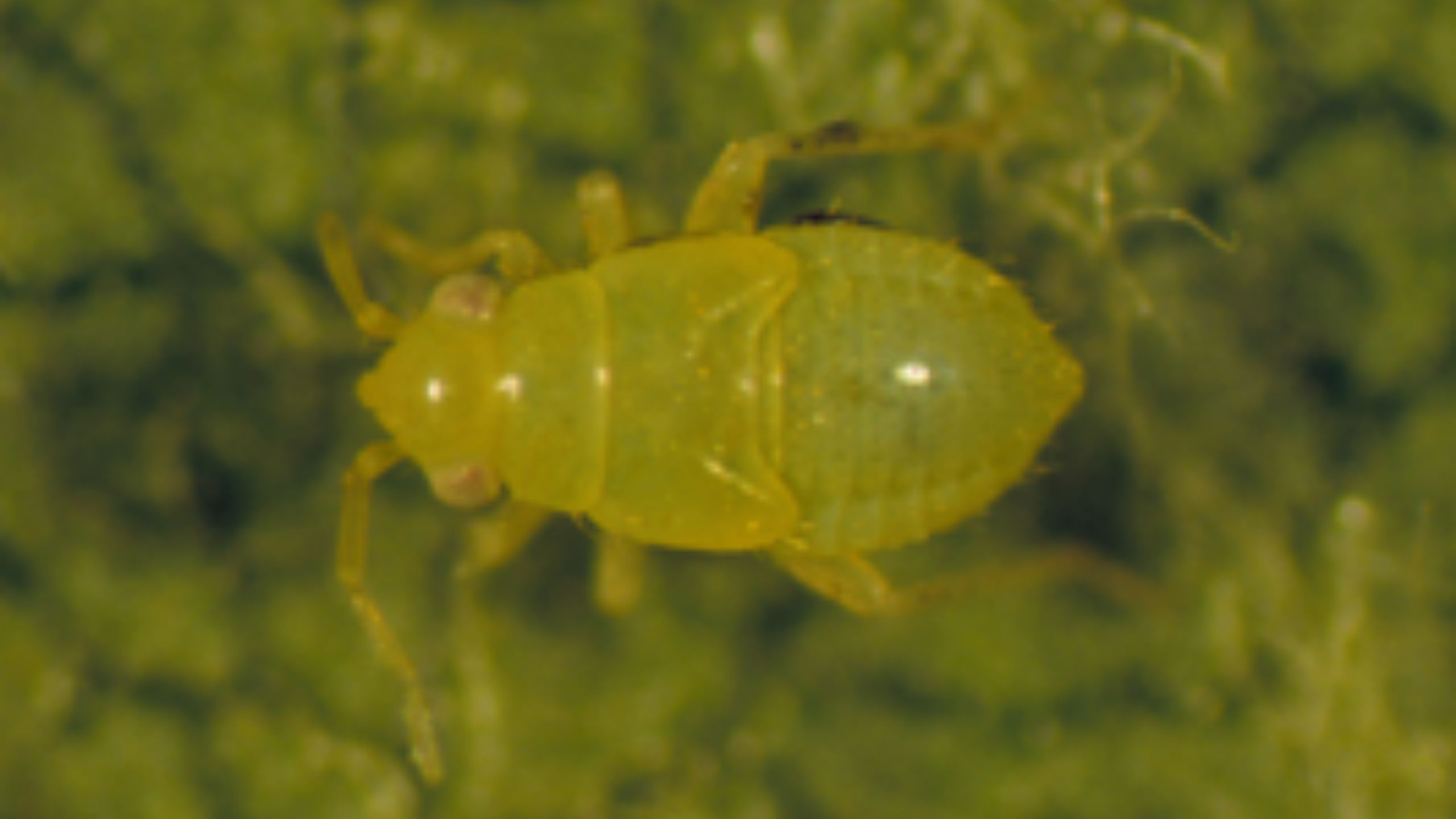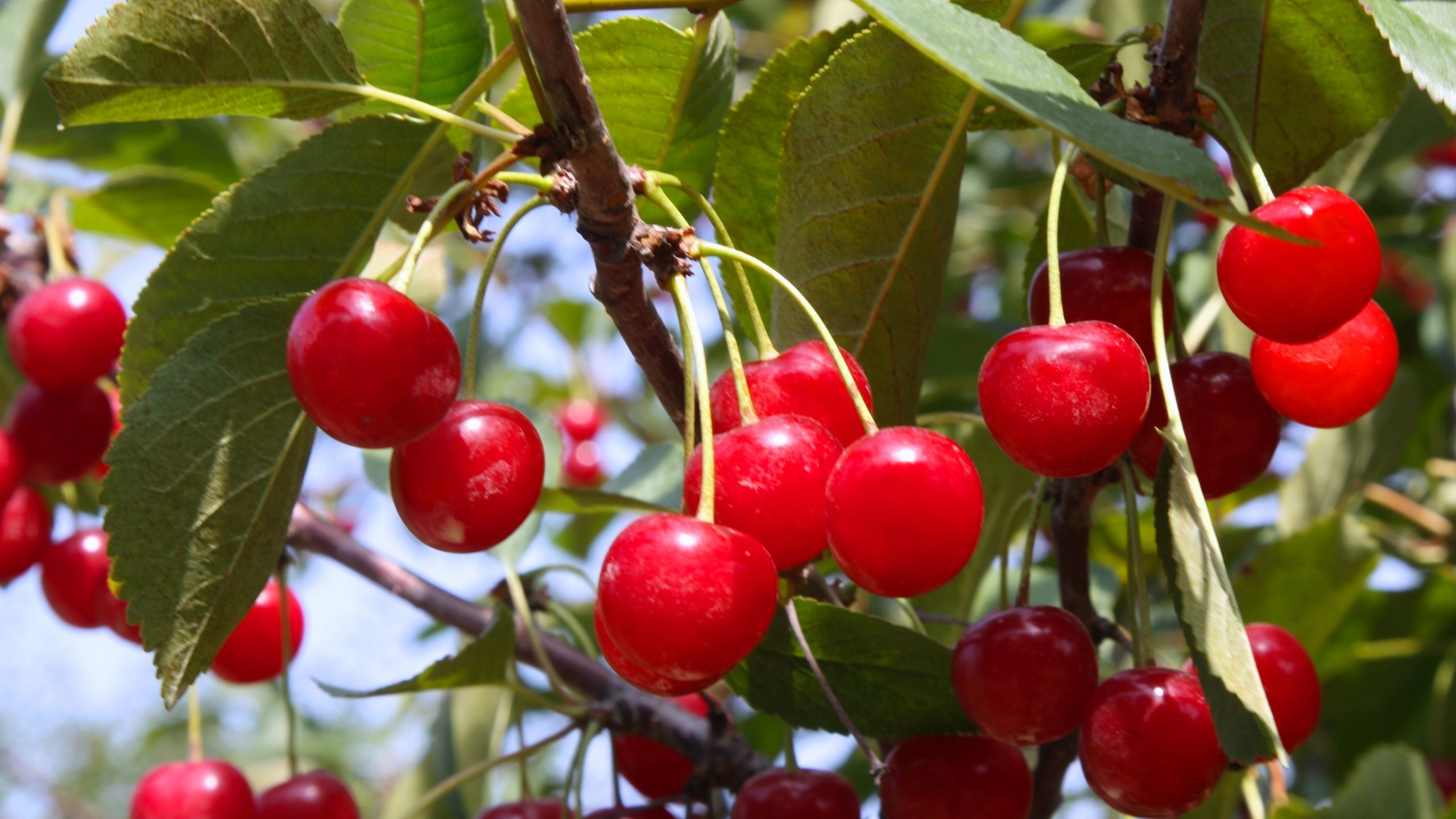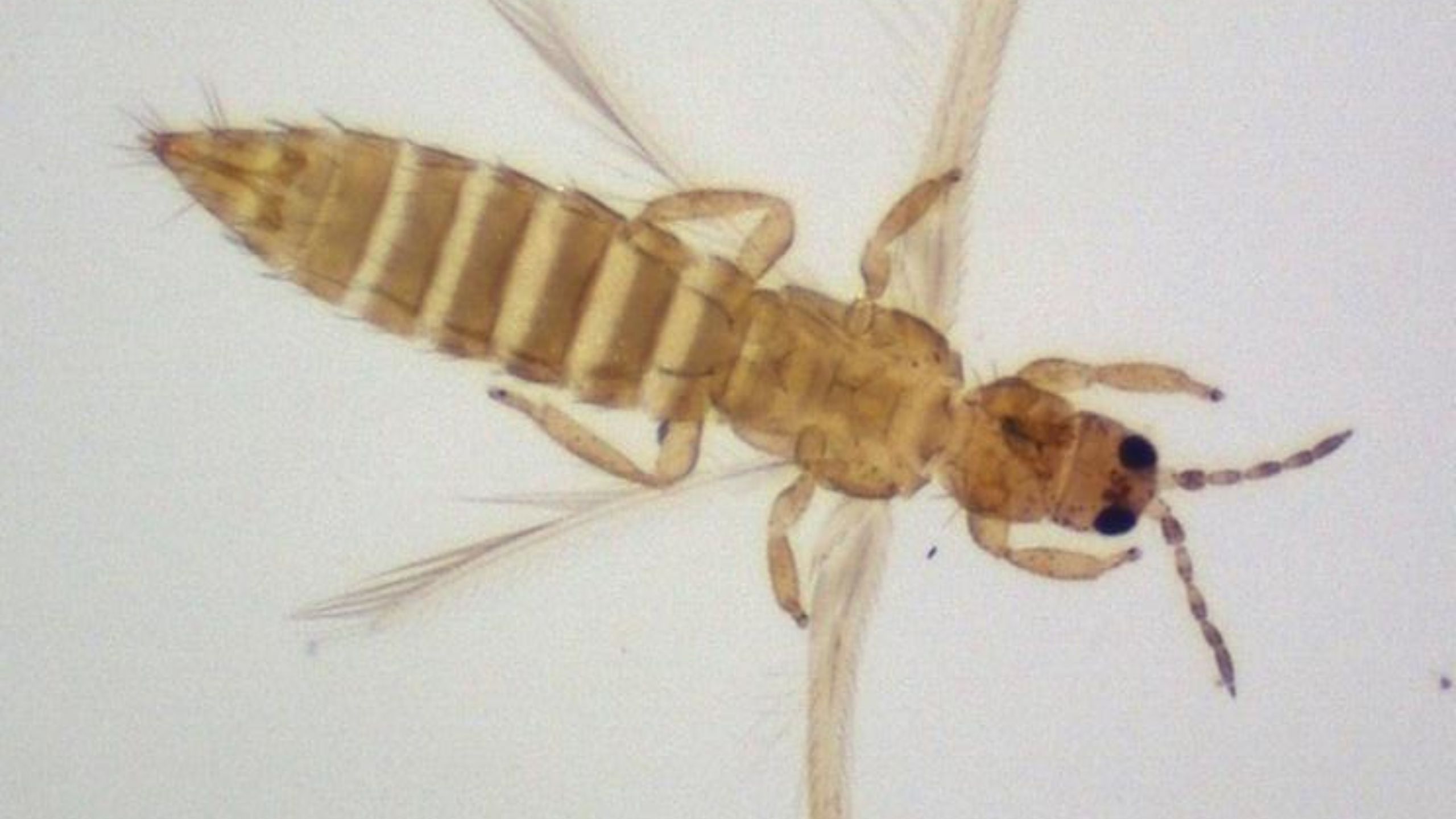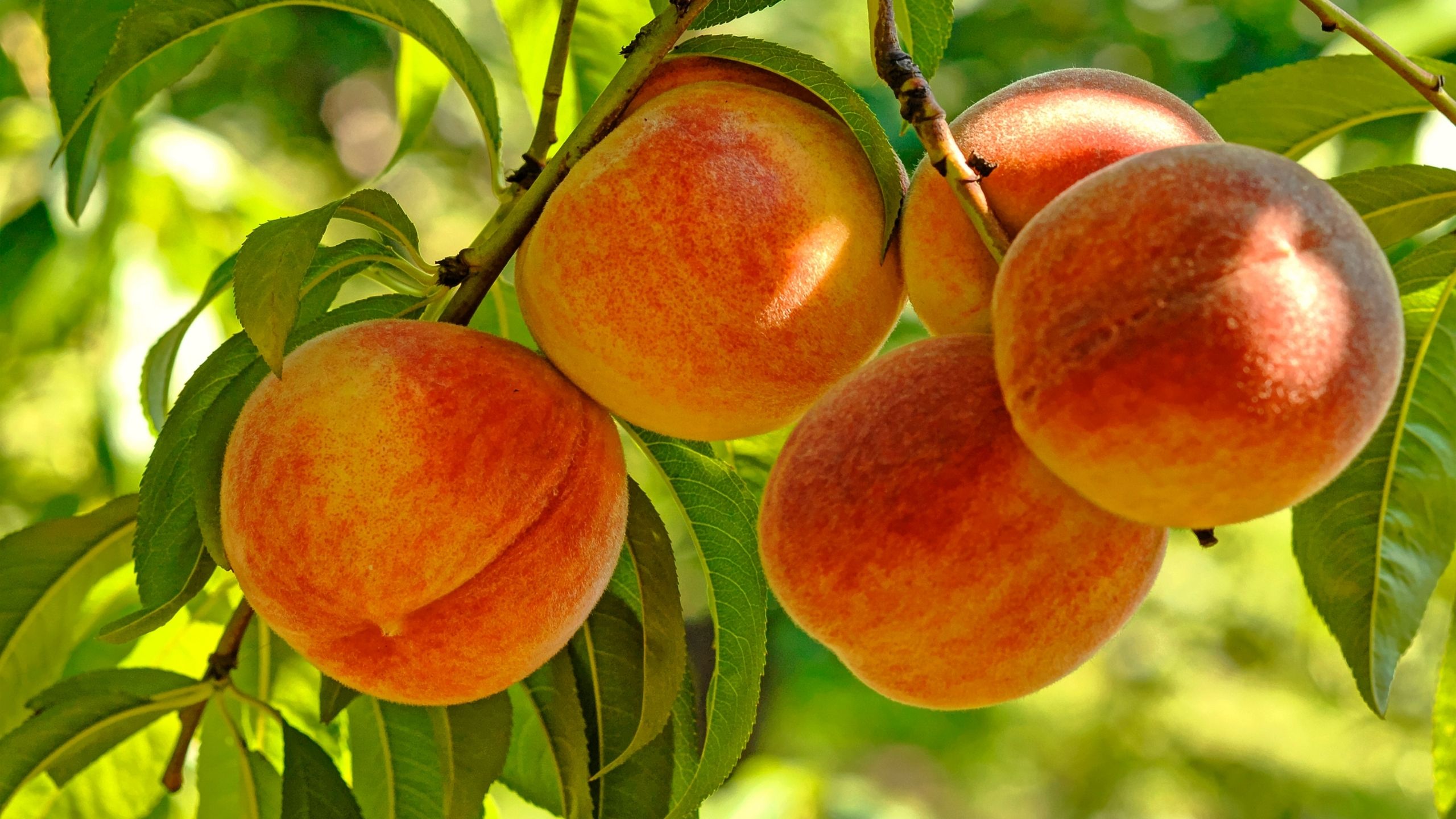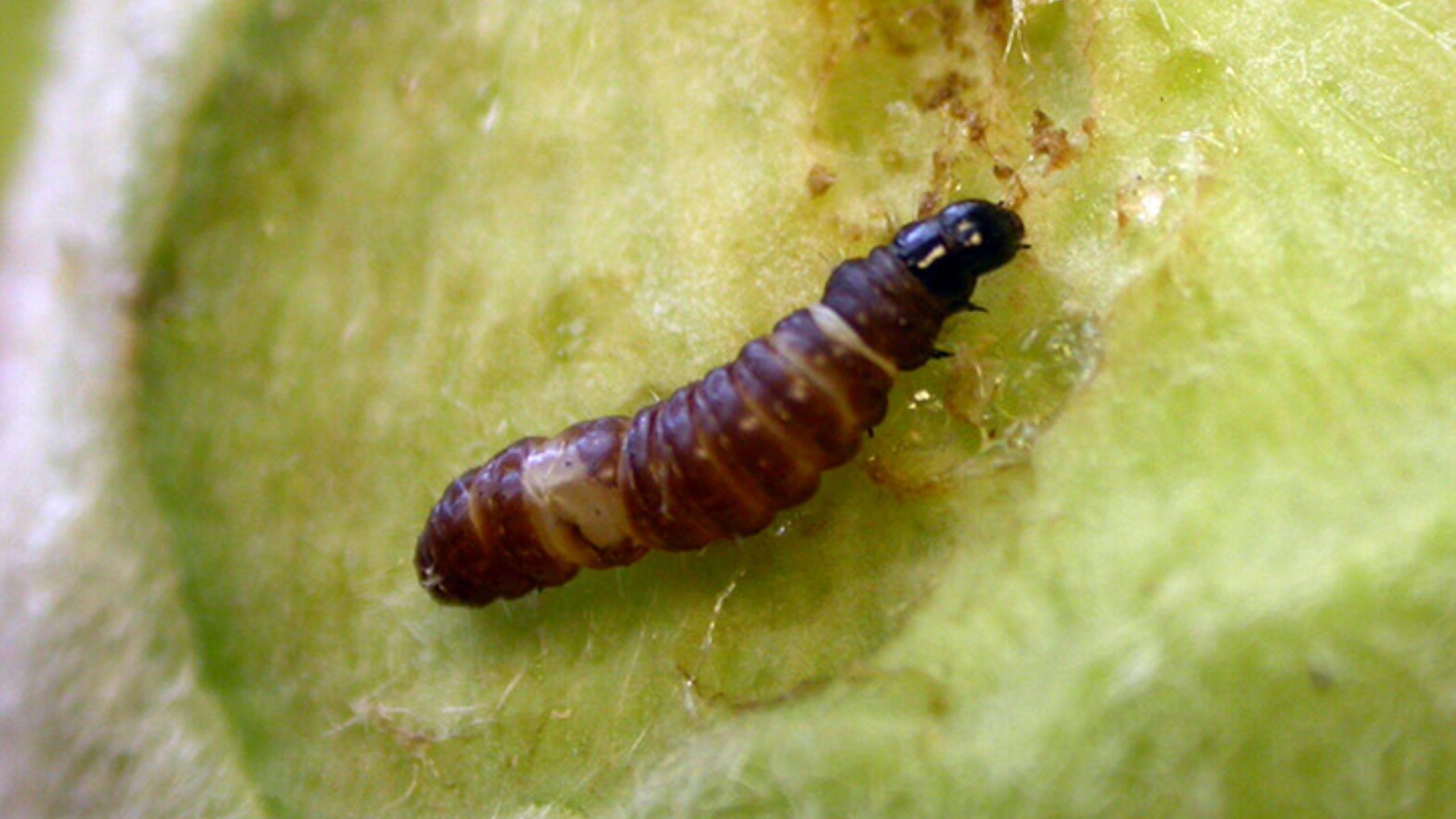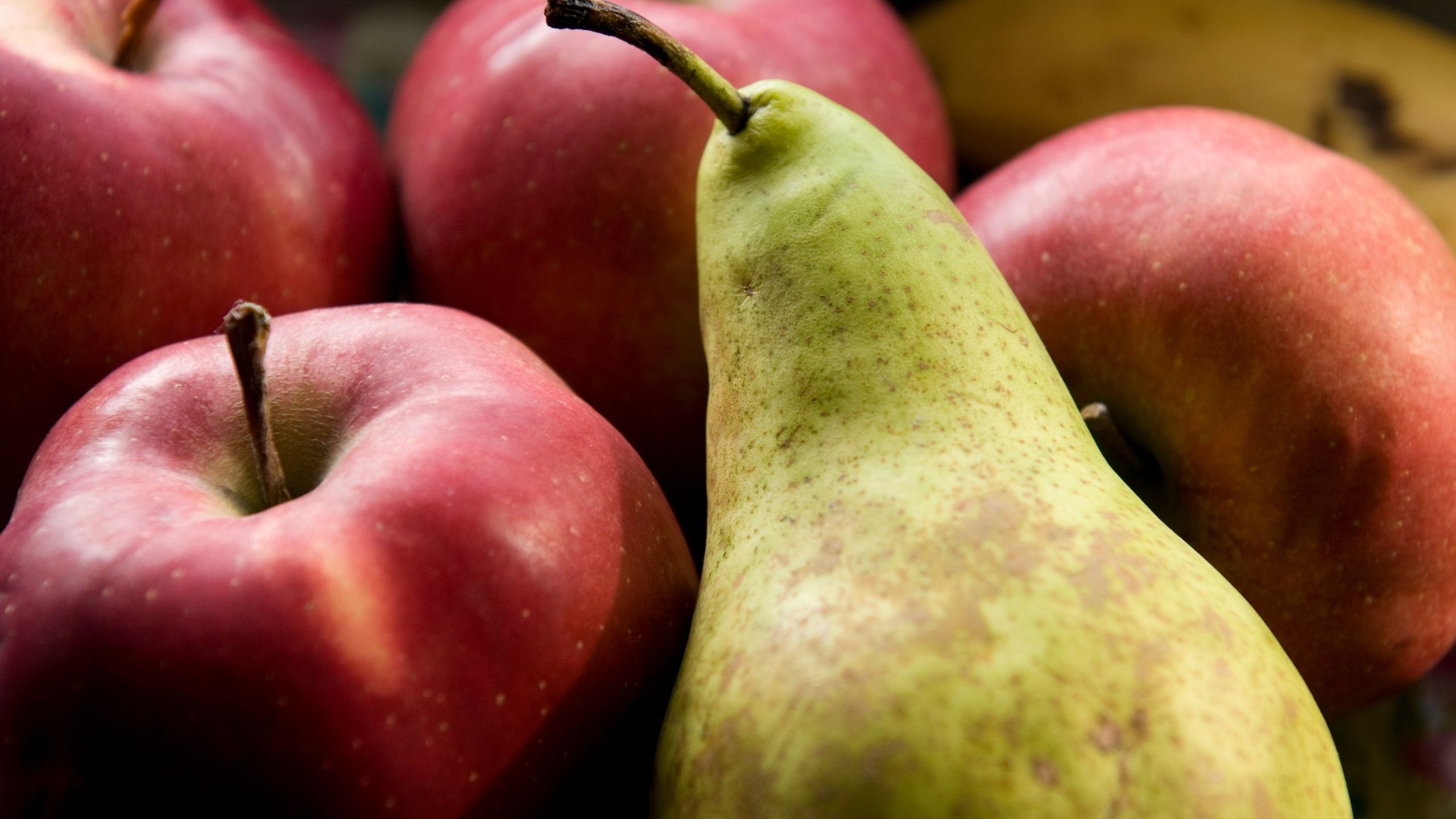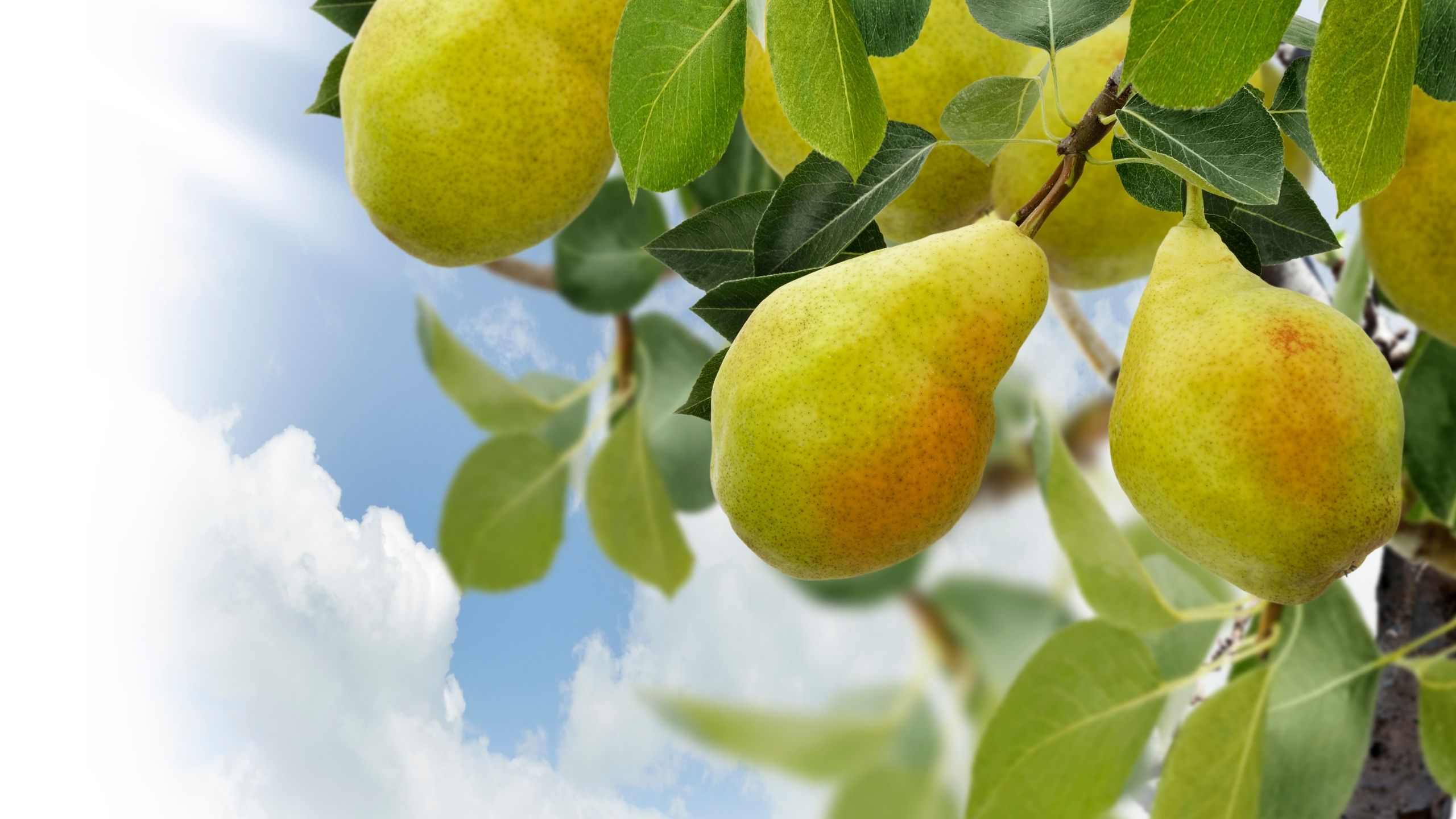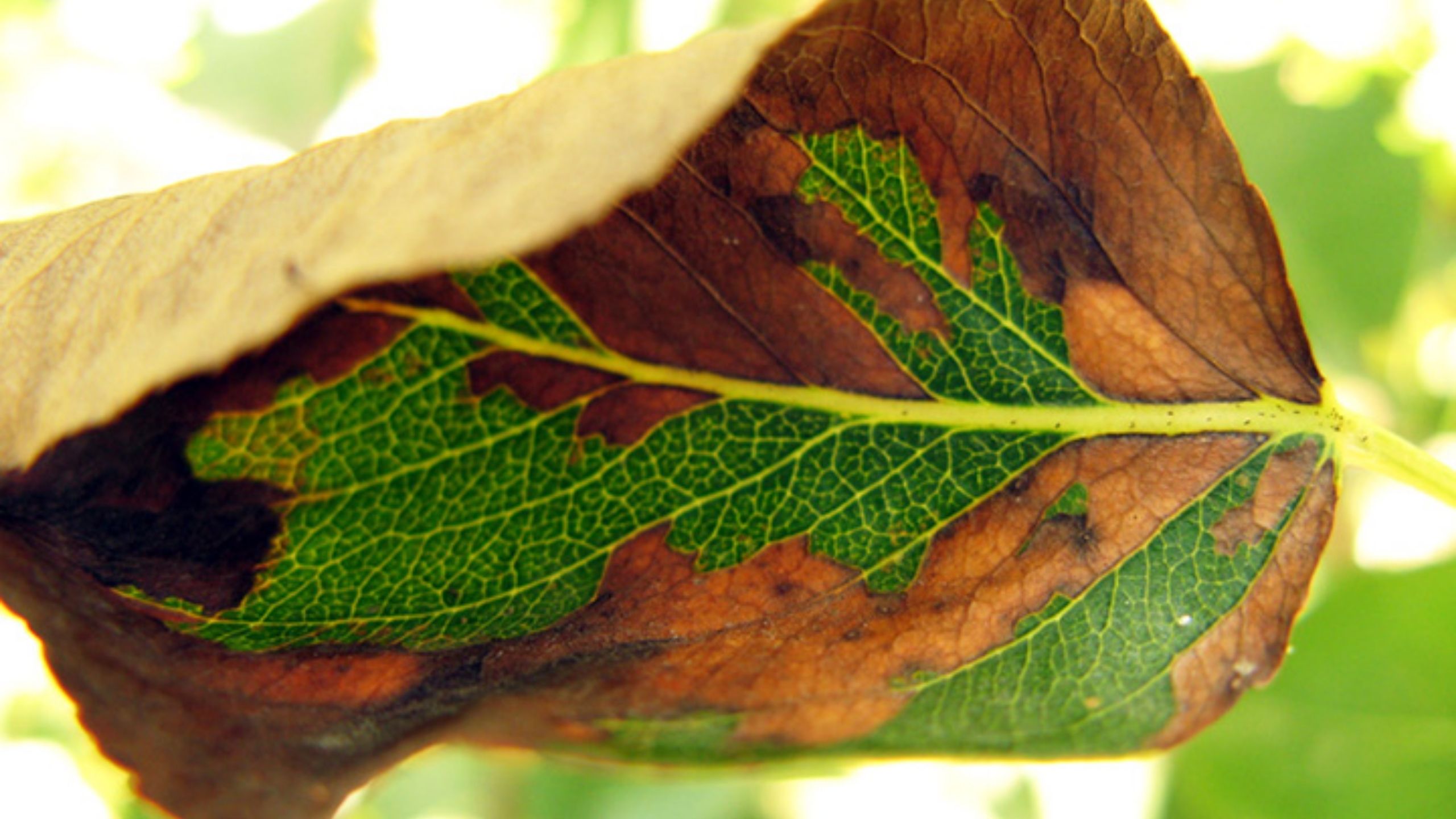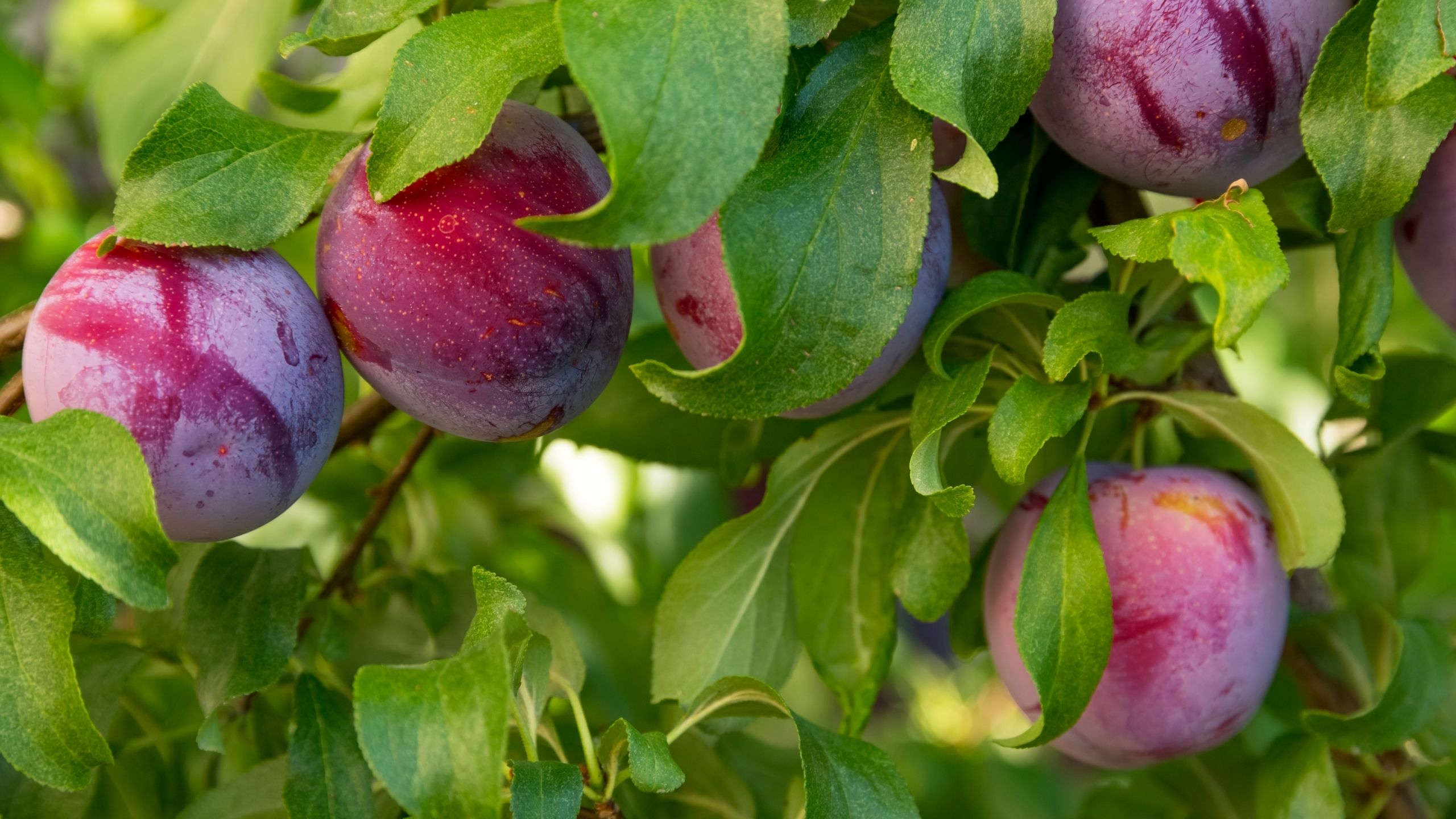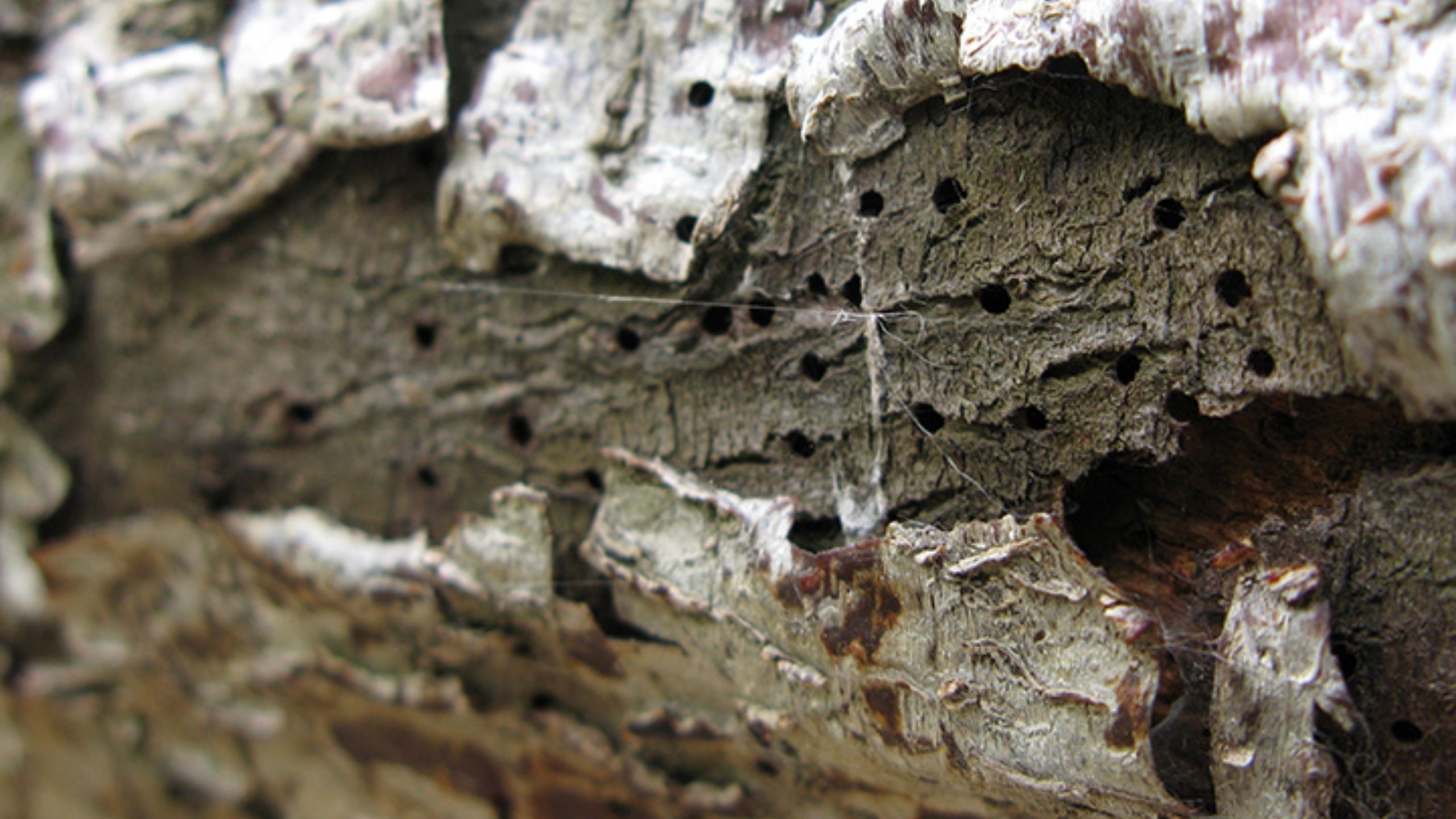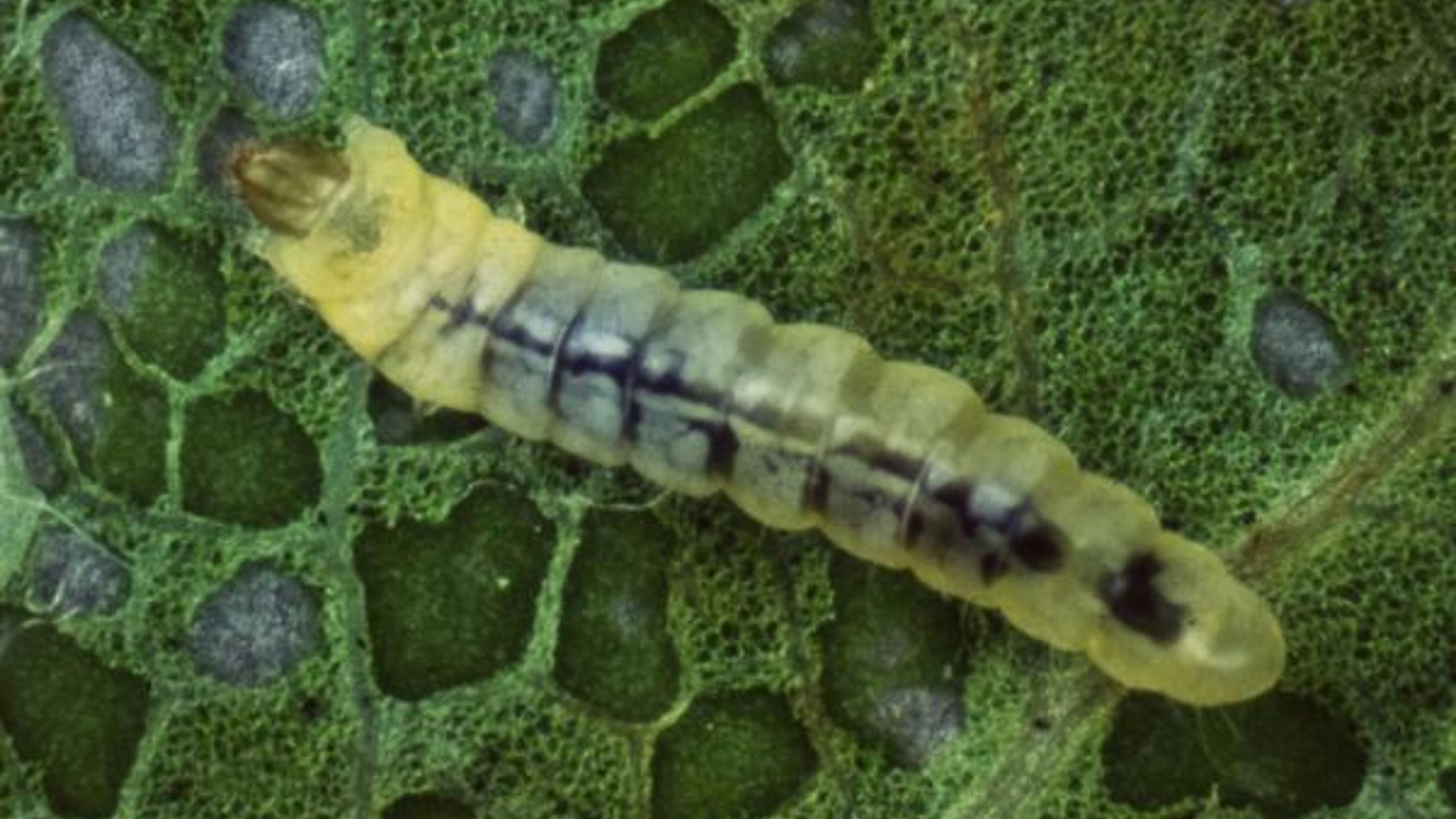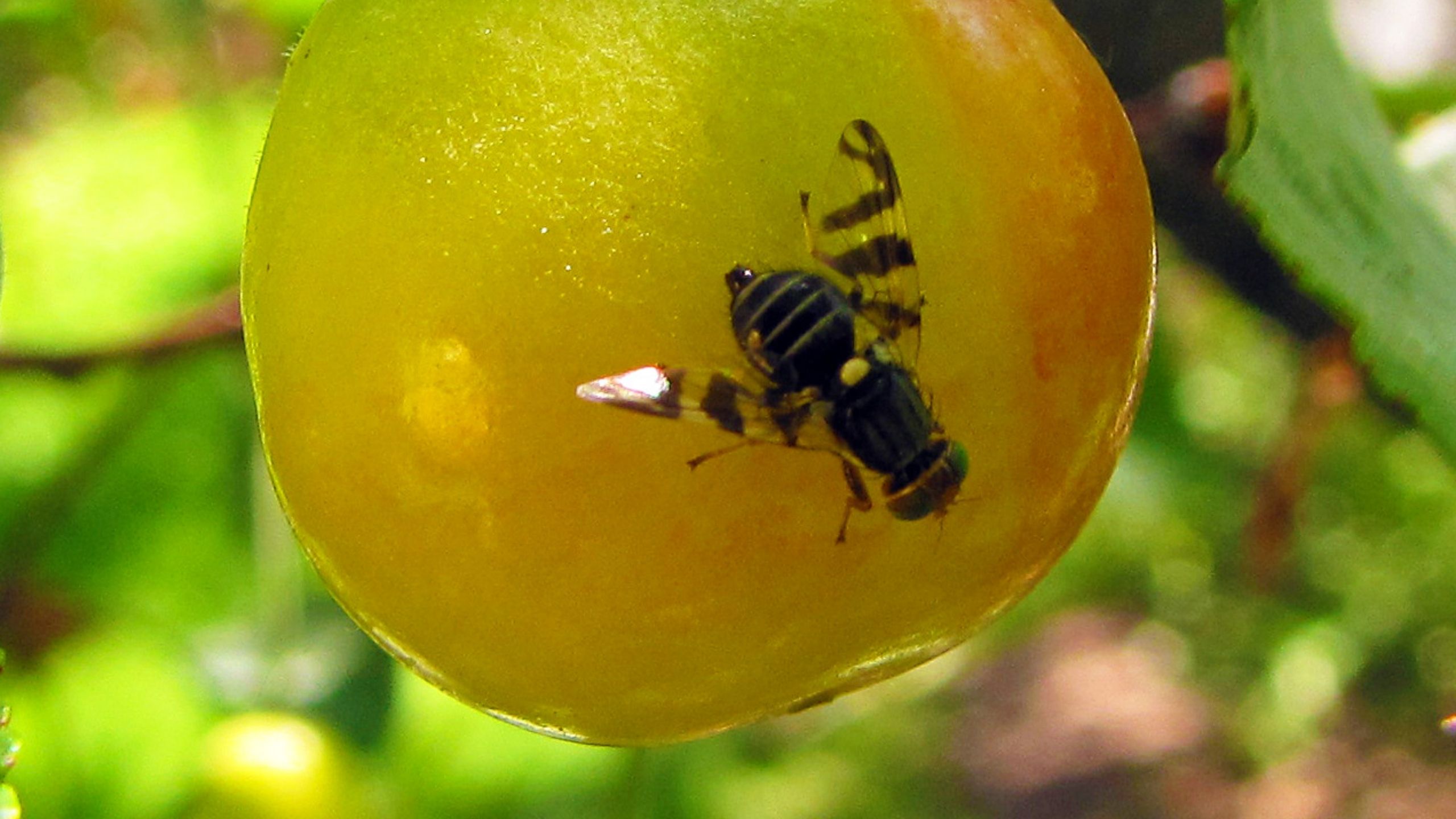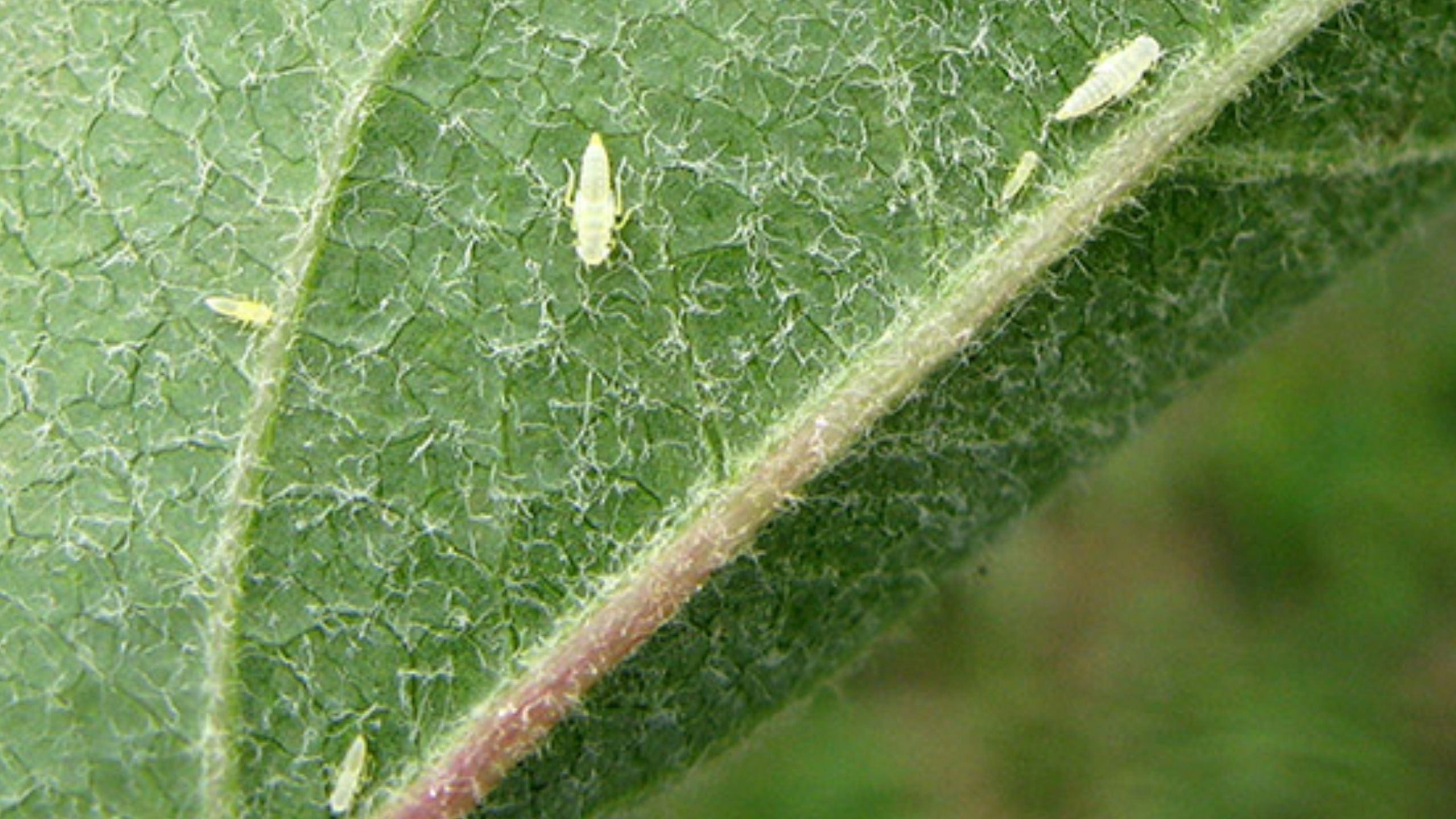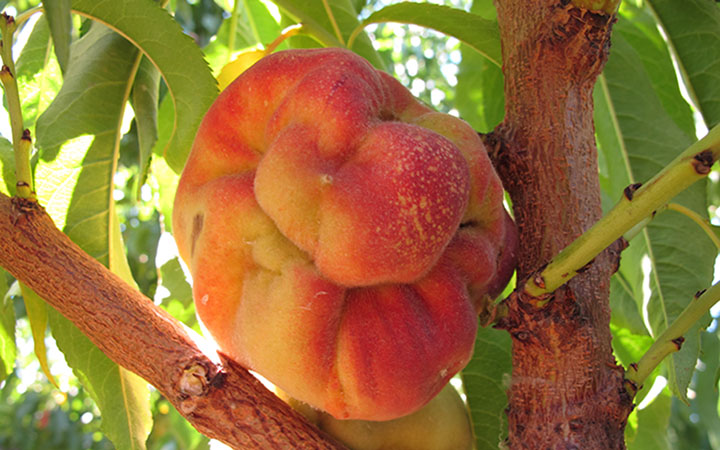Western Tentiform Leafminer
November 2011
Diane G. Alston, Entomologist • Michael E. Reding, Entomologist (No longer at USU)
Do You Know?

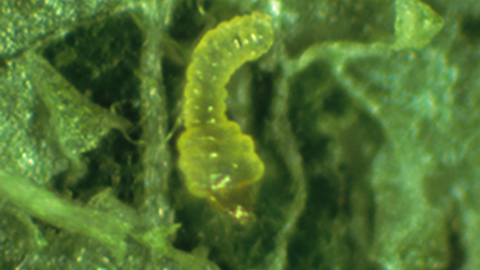
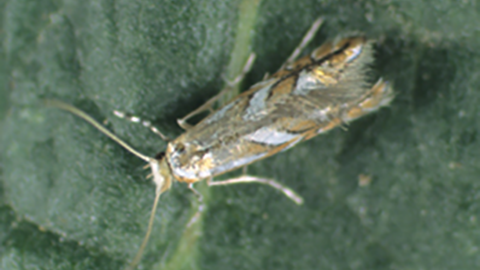
- Western tentiform leafminer is an indirect pest that mines the leaves of apple and cherry trees
- It can reduce photosynthesis, and thus fruit size and quality
- Leafminer populations can fluctuate dramatically within and between years; a large population hasn’t been observed in Utah’s commercial fruit districts since the early 2000s
- Biological control by numerous, naturally occurring wasps is common
- Successful management requires a good sampling program and knowledge of treatment thresholds:
- 1 mine per leaf in early June
- 2 mines per leaf in mid-June to July
- 5 mines per leaf in August
- Leafminers are resistant to many common insecticides
- Insecticides have a detrimental effect on their natural biological control agents—parasitic wasps
Western tentiform leafminer (Phyllonorycter elmaella) populations can vary tremendously between years or even between generations within a single year. A large population in Utah’s commercial fruit districts hasn’t been observed since the early 2000s. Increasing resistance to organophosphate insecticides and variable effectiveness of at least six parasitic wasp species that attack the leafminer can influence the population size.
In Utah, the leafminer typically has three generations per year but may have as many as four in some years. The immature larval stages—sap feeders and tissue feeders— feed on apple and cherry leaves. When densities are high enough, feeding can cause a reduction in fruit size and quality.
Hosts
- Apple
- Cherry
- Pear
- Prune
Life History
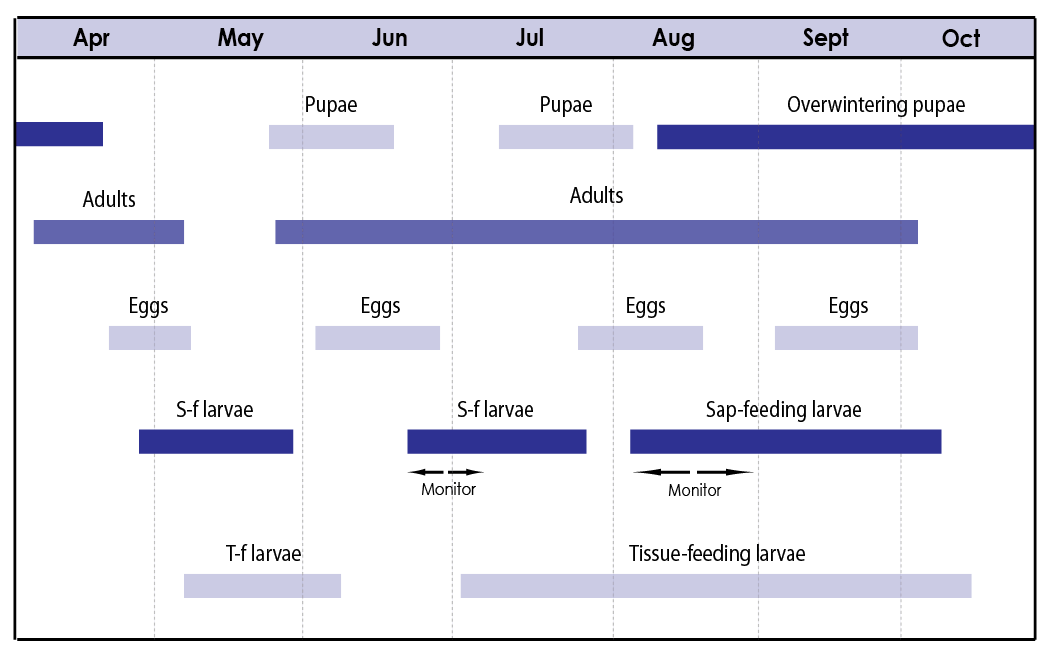
The two arrows indicate when sap-feeding larvae should be monitored during the second and third generations, because if control treatments are necessary they should target this stage.
Pupa—Overwintering Stage
- Size: 1/8 to 1/5 inch (3 to 5 mm) long
- Color: yellow-brown changing to dark brown just before the adult emerges
- Shape: cylindrical tapering sharply at the rear end
- Where: Overwintering pupae are inside mines in fallen leaves; summer pupae are inside mines in leaves on trees
- Summer pupation lasts 7 to 10 days
- Just before emerging, pupae cut through the mine and protrude out the lower leaf surface
- Pupal skins remain attached to the mine after adults emerge and are called “emergence tubes"
Adult

- Size: 1/8 to 1/5 inch long, small, slender moth
- Color: forewings with golden brown and white bands edged with black; hindwings are gray with long hairs on the edges
- Shape: wings are held roof-like over the body when at rest
- When: first generation moths emerge from overwintering pupae in the early spring often around the green tip stage of apple
- May be up to three additional flights in the summer and fall; adult moths emerge continuously from June through September
- Life stages begin to overlap after the first generation
- Females lay eggs shortly after emerging
Egg
- Size: extremely small, about 1/100 to 1/80 inch (0.25 to 0.3 mm) in diameter and difficult to see without magnification
- Color and shape: transparent when first laid, turning yellowish green; round and flat
- Where: on the undersides of leaves
- Hatches in 1 to 2 weeks
Larva—Damaging Stage
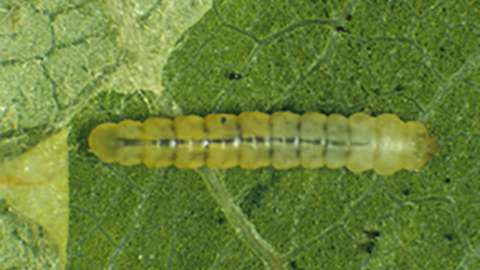
- Newly hatched larva mines down through egg case into leaf tissue
- Passes through five instars
- Size and color: 1/12 inch (2 mm) long by the third instar, cream in color
- Shape: flat, wedge-shaped, and legless
- Where: feeds on sap from the spongy mesophyll layer of leaves with sucking mouthparts
- Separates outer layer of the leaf undersurface from the tissue above to form a mine, which often follows leaf veins
- Mines appear as a blotch and are only visible from the undersides of leaves at this stage
- Size and color: 1/8 to 1/6 inch (3 to 4 mm) long, cream turning yellow by the fifth instar
- Shape: cylindrical with legs, round head, and chewing mouthparts
- Where: feeds on leaf tissue just up to, but not through, the epidermis
- Attaches silken threads to both sides of the mine pulling them together to form a tent-like structure in the leaf
- Mines can be seen from the upper leaf surfaces and have a characteristic mottled appearance with white spots on top where green tissue has been removed
- The fifth instar larva spins a silken chamber for pupating inside the mine
Host Injury
Larvae feeding on leaves can: Reduce photosynthesis- Disrupt tree growth regulation governed by hormones produced in the leaves
- Reduce fruit quality by slowing sugar development
- Cause leaf drop, premature fruit ripening, and fruit drop in severe infestations
- Increase susceptibility of heavily infested leaves to pesticide chemical burn
- Increase fruit sunburn if leaves surrounding fruit are curled or have fallen prematurely
Timing Control
Sampling should focus on determining the number of mines in leaves. The best time to sample for western tentiform leafminer larvae is at the beginning of the second generation, which usually occurs from mid-June to early July. Sampling earlier in the season for first generation eggs and sap feeder larvae is possible, but the eggs are difficult to locate and identify, and there is a poor relationship between the number of first generation eggs and the number of resulting mines.
Quick Evaluation Method
How to Sample
- Begin sampling in mid-June
- Walk through the orchard and quickly scan tree terminals (leaf clusters at the ends of shoots) to estimate the number of mines per leaf
- Sap feeders are the predominant stage at this time, so look on the undersides of leaves for mines
| Second Generation: mid-June to early July | |
|---|---|
| If terminals have: | |
| <1/2 mine per leaf | Return in 5 to 7 days to do another quick evaluation |
| 1/2 mine to 1 mine per leaf | Take a complete sample: sampling should continue through August |
Complete Sampling Method
Scouting for western tentiform leafminer can be done at the same time as mite sampling (see “Web Spinning Spider Mite” fact sheet). If you have a large acreage of apples and cherries, you may want to select several representative blocks where you will conduct the scouting program. Randomly select 10 trees scattered throughout a 2 to 5 acre block to sample. If the orchard block is larger than 5 acres, it may be neccessary to sample more trees. See the “Western Tentiform Leafminer Complete Sampling Method” for a sampling form.
How to Sample
- If the quick evaluation method indicates the need for a complete sample; sample for second generation leafminers during mid-June and early July
- Scout designated orchard blocks every 1 to 2 weeks
- On each sampling date, collect 10 leaves from each of the 10 trees (100 leaves total)
- Count the number of mines found and determine the average number of mines per leaf for the orchard block (divide the total number of mines by 100)
- These same leaves can be used to monitor for mites
- Third generation leafminers should be sampled in early to mid-August using the quick evaluation or complete method as indicated by the density of the mines present
- If the second generation was treated, or if sap feeders do not appear until late August or September, then it is not necessary to sample the third generation
Management
Insecticides targeted for leafminer control are most effective against the sap feeder stage although parasitism is not usually evident until the tissue feeder stage. Therefore, parasite levels from earlier generations should be considered along with current sapfeeder mine densities during second and third generations to determine if treatment thresholds have been reached.
Treatment Threshold| Leafminer Generation | Treatment Threshold |
|---|---|
| Second | |
| Early June | 1 or more mines per leaf and parasitism of larvae is less than 30%a |
| Mid-June to July | 2 or more mines per leaf and parasitism of larvae is less than 30% a |
| Third | |
| August | 5 or more active mines per leafb |
aOpen up a subsample of mines to look for parasites
bTo determine if a mine no longer contains an active larva, look for presence of an adult emergence tube attached to the mine on the lower leaf surface
Insecticides
Chemical control is most effective against sapfeeding larvae in mines and adult moths flying in orchards. Insecticide sprays should only be applied when leafminer treatment thresholds are exceeded during the second or third generation. Pre-bloom applications targeting first generation sapfeeders are only recommended if large numbers of adult moths are observed in the orchard during April or May, or egg counts exceed three per leaf during tight cluster to pink stage of apple.
Recommended insecticides:
- abamectin (Agri-Mek)R
- acetamiprid (Assail)
- flubendiamide (Belt)
- imidacloprid/cyfluthrin (Leverage)R
- imidacloprid (Admire)
- kaolin clay (Surround)O,H - multiple applications required for population suppression
- spinosad (Success, EntrustO)H - time applications for egg hatch, which may occur during bloom
- thiamethoxam/chlorantraniliprole (Voliam Flexi)
OOrganic (OMRI-approved) products available.
HHomeowner products available.
RRestricted use insecticide; restricted to those with a pesticide applicators license only
All brands are registered trademarks. Examples of brands may not be all-inclusive, but are meant to provide examples of products registered in Utah. The availability of pesticides may change. Always read the label for registered uses, application and safety information, and protection and pre-harvest intervals.
Biological Control

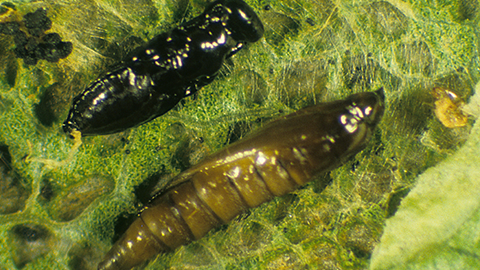
There are at least six species of parastic wasps that attack leafminers in the Northwest, and at least several species are common in Utah orchards. Leafminer parasitism can be as high as 90% and can eliminate the need for chemical control of even a formerly high population. The wasps lay their eggs inside the mines on the outside of leafminer larvae. Wasp larvae hatch from the eggs and devour the developing leafminer larva.
Parasitized LeafminerTo determine if a leafminer larva has been parasitized, open up a mine and look for one of the following:
- A wasp larva feeding on a deflated leafminer larva
- The pupal stage of the wasp along with a shriveled leafminer larva
- An empty mine with the remains of a leafminer larva and a wasp pupal case, and no emergence tube formed by the adult leafminer moth
Insecticides to Avoid
Insecticides that are toxic to the parasites should be avoided during mid- to late summer. In Washington studies, the following insecticides were shown to have moderate to high toxicity to Pnigalio flavipes, the main parasite of western tentiform leafminer in the Northwest:
- endosulfan (Thiodan)
- esfenvalerate (Asana)
- oxamyl (Vydate)
Related Research



